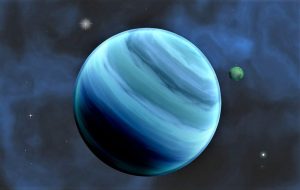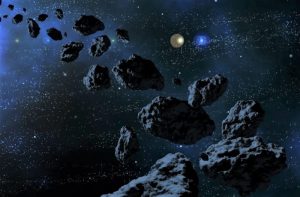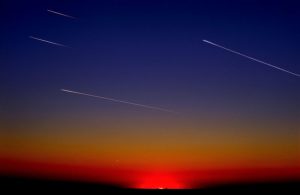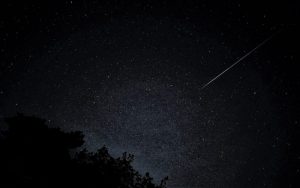Gas giants
The gas giant or gaseous planet as it is also known, is a large planet composed mainly of gases, such as hydrogen and helium, with a relatively small rocky nucleus. The gas giants of our solar system are Jupiter, Saturn, Uranus and Neptune. These four giant planets, also called jovial planets after Jupiter, reside in the outer part of our solar system beyond the orbits of Mars and the asteroid belt. Jupiter and Saturn are substantially larger than Uranus and Neptune, and each pair of planets has a somewhat different composition.

Related topics
Dwarf planets
What are gas giants?
They are the planets located in the external part of the solar system and that are formed mainly by hydrogen and helium, which is a reflection of the composition of the original solar nebula.
Which are the gas giants?
The gas giants that exist in our solar system are the following:
- Jupiter: the largest in our solar system and is therefore called the giant planet. It is composed mainly of hydrogen and helium that surrounds a dense nucleus of rocks and ice. It has an enormous magnetic field and is visible at simple sight. Its atmosphere consists mainly of hydrogen, helium, ammonia and methane. One of its main characteristics is the red stain that it possesses due to the great pressures of the atmosphere and the high clouds.
- Saturn: is characterized by large rings. It has 53 known moons and is composed mainly of hydrogen and helium surrounding a dense nucleus, its atmosphere is similar to that of Jupiter.
- Uranus: is the only planet inclined sideways and rotates backwards in relation to each planet. The atmosphere is composed of hydrogen, helium and methane, and was discovered by William Herschel in 1781. It completes its orbit in 84 Earth years and has five major satellites.
- Neptune: its atmosphere is composed of hydrogen, helium and methane. It has 13 confirmed moons and was discovered by several people in 1846. It manages to complete its orbit which is almost circular in 164 terrestrial years and its rotation period is around 18 hours. They have a structure very similar to that of Uranus.
It is also important to mention that due to the difference that all these planets have in their structure and composition, the four gas giants are usually differentiated by name, Jupiter and Saturn are classified as “gas giants“, while Uranus and Neptune are known as “ice giants“.
Characteristics
The main characteristics of the gas giants are the following:
- They do not have a well-defined surface.
- They are formed of an immense gaseous mass where hydrogen and helium are abundant.
- To refer to their diameters, surfaces, volumes or densities the outside layer is seen from the outside.
- Their atmospheres are very dense.
- They have a large number of satellites and ring systems.
- They are known by the name of Jovian planets, due to their appearance with Jupiter in size and characteristics.
- They have a low density and their nucleus is very rocky.
- They receive very little light, so they have a very low temperature.
- They turn quickly, with an average rotation of 10h.
- It has a powerful magnetic and gravitational field that allows them to retain the masses of gas that they possess.
- The atmospheres and climatic patterns of the four giants are quite similar.
Why they are called gas giants?
The gas giants are called this way because they are planets in which their composition is dominated by gases, mainly hydrogen and helium. Most of the exoplanets or extrasolar planets that have been discovered so far, are gaseous because they are planets of greater size and mass. They are also called giant planets because their size is much larger than that of the terrestrial planets of the solar system and because of this, they are easier for scientists to discover than other planets.
How they differ from rocky planets?
One of the main differences that we can notice between gas giants and rocky planets is that the first ones are composed mainly of hydrogen and methane, in other words, they are composed of gases; instead, rocky planets are composed mostly of a solid surface and rock.
Other differences are that gas giants do not have a surface with a good definition, while rocky planets do. The rocky planets have secondary atmospheres that have arisen from the internal geological processes of the earth, whereas the gas giants have primary atmospheres that have been captured directly from the original solar nebula.
Examples of gas giants
The gas giants are Jupiter, Saturn, Uranus and Neptune, in addition to some that are in the external part of the solar system.
How to cite this article?
Briceño V., Gabriela. (2019). Gas giants. Recovered on 3 January, 2025, de Euston96: https://www.euston96.com/en/gas-giants/









